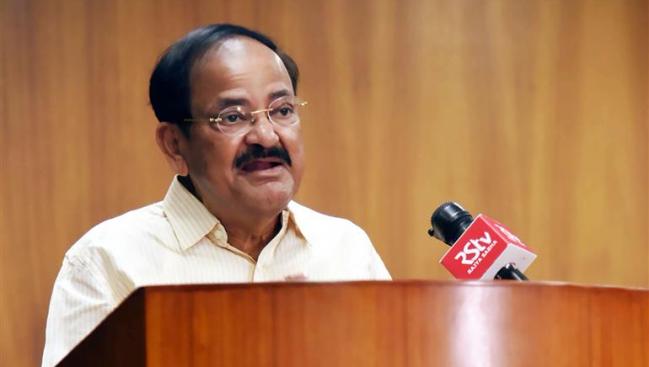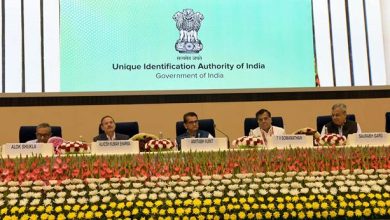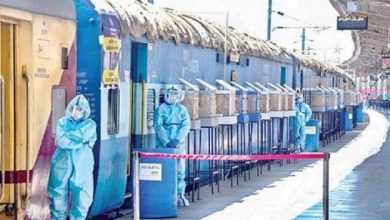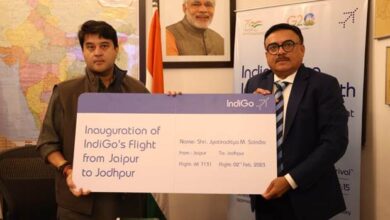Quality along with Affordability must be Ensured in Housing for the Common Man: Vice President

The Vice President Shri M. Venkaiah Naidu today stressed the need for providing affordable, safe and durable housing to the growing middle classes without compromising on quality.
At the same time, there is a need to ensure aesthetics, the Vice President said while virtually inaugurating the Platinum Jubilee Foundation Day of Central Building Research Institute (CSIR-CBRI). The rapid economic growth and increased urbanisation has led to a great demand for housing in cities, making it a daunting task for planners, he added.
Emphasising on the importance of aesthetics, he said – “When a family lives in a crammed locality with hardly any ventilation or sunlight reaching the homes, it naturally affects their wellbeing.” COVID has shown us the need for air circulation and the importance of sunlight, and it is the duty of the architects, planners, governments and institutions like CBRI to ensure these elements in built structures, added. He also suggested that authorities look into the feasibility of making adequate light and air circulation a norm for building plan approval.
The Vice President observed that the emotional appeal of a ‘home’ has not changed, even as we progressed from simple mud-walled huts to sophisticated skyscrapers. Thanks to our economic growth, schemes like Pradhan Mantri Awas Yojana and progressive legislations like RERA which protects home buyers, the dream of owning a home is not just of the few anymore, he added.
In order to fulfil the responsibility of ‘Housing for All’ in letter and spirit, Shri Naidu called for adopting latest technological advancements such as prefabricated buildings, factory-made housing and precast stone blocks. Pointing to the fact that the current practices are still largely labour and material intensive, he said this often leads to time and cost overruns. Institutes like CBRI must lead the way in the latest technological advancements like 3-D printed housing and zero energy buildings, Shri Naidu observed.
He also said that our construction workforce must be well-trained in modern construction techniques, noting the huge employment potential in the sector. “Unskilled manpower in this sector must become skilled manpower”, he said.
The Vice President also raised the issue of sustainability in buildings. Underscoring the need for green buildings’, Shri Naidu said that 39% of energy-related CO2 emissions in the world are coming from buildings, a major contributor to greenhouse gases. He called for making green buildings the ‘new normal’ by creating awareness about this concept among the people.
Shri Naidu also highlighted the importance of using ‘green materials’. Pointing out that the production of traditional construction materials like brick, wood, cement, steel and sand is energy-intensive, the Vice President called for promoting nature-friendly homes by increasing the use of locally available materials or ‘green materials’. “‘Reduce, reuse and recycle’ should be the mantra of civil engineers and they should utilise the by-products of other industries such as fly ash from power plants”, he added.
Shri Naidu also called for addressing the huge housing shortage in rural areas. He added that the Government has launched the ambitious PMAY (Gramin) for this purpose with an aim to provide a pucca house to all, by 2022. He reiterated the vision of Shri APJ Abdul Kalam and Shri Atal Bihari Vajpayee who called for providing urban amenities in rural areas. “If we can provide these, along with employment opportunities we can contain rural-urban migration and reduce the pressure on cities”, the Vice President advised.
Noting that the country is prone to multiple hazards and calamities, Shri Naidu also highlighted the importance of adopting disaster-resilient designs and construction practices as the new norm in all buildings. He appreciated the role of CBRI in improving Disaster Mitigation in buildings, including Fire Engineering and for its role in constructing five COVID hospitals in Himachal Pradesh in a record time. He expressed hope that the Institute will continue to be at the forefront of the ‘housing revolution’ in India and work for the shared dream of ‘Housing for All’.
The Vice President also virtually inaugurated makeshift hospitals at Nalagarh and Tanda, Himachal Pradesh, the Platinum Jubilee Pseudo Dynamic Laboratory and the Centre for Excellence in Cultural Heritage at CSIR-CBRI.
Shri Jai Ram Thakur, Hon’ble Chief Minister of Himachal Pradesh, Dr. Shekhar C Mande, Director General, CSIR & Secretary, DSIR, Dr N. Gopalakrishnan, Director, CSIR-CBRI, Roorkee were among the dignitaries present during the virtual event.
Following is the full text of the speech:
“Sisters and brothers,
It is indeed my pleasure to connect with you virtually to inaugurate the Platinum Jubilee Foundation Day celebrations of Central Building Research Institute (CBRI). Started as a ‘Building Research Unit’ during 1947, CBRI is one of the 37 national laboratories of the prestigious Council of Scientific and Industrial Research (CSIR). I am happy to note that CSIR and CBRI have been greatly contributing to nation building over the decades. I also convey my deep appreciation to the scientists of this institute, for having taken the responsibility of constructing five COVID hospitals in Himachal Pradesh, in a record time.
I am also happy to have inaugurated today the makeshift hospitals at Nalagarh and Tanda, Himachal Pradesh, the Platinum Jubilee Pseudo Dynamic Laboratory and the Centre for Excellence in Cultural Heritage at CSIR-CBRI.
The idea of our home evokes a warm feeling in our hearts. Wherever we are and whoever we may become, at the end of the day, it is an amazing feeling to go back to the place we call home. Over the course of human history, people might have progressed from simple mud walled huts to sophisticated skyscrapers, but the emotion remains the same.
What has changed of course, in the recent decades, is the criticality of real estate to our economy. Real estate market size in India is expected to reach 1 trillion US Dollar by 2030. It will contribute to nearly 13 percent of the country’s GDP by 2025. Housing and construction propels many ancillary sectors and is one of the largest employers in the country- both in the organised and unorganised sectors. The sector’s importance- both to the common man and to the macro-economy is bound to grow in the coming years.
With this kind of rapid growth, environmental and energy concerns in the housing sector have taken the center stage. With significant economic growth and a burgeoning middle class over the years, dream of owning a home is not just of the few anymore. It is our paramount responsibility to provide affordable housing to an average Indian household.
In this regard, the Central government’s focus on housing is also clearly evident from the various schemes – Pradhan Mantri Awas Yojana, AMRUT, HRIDAY, aimed at improving the ease of living. We need to further build on this momentum to fulfil the lasting dream of a home for every citizen.
Sisters and brothers,
While we aim to achieve this dream, we have to ask ourselves the following questions:
We have mastered the art of construction, but is it available for all?
What type of buildings we want to envision for our future generations?
What kind of space do we want to live and work in?
We need to ponder over these questions and the related issues. Today, I would try to look into the issue of buildings along three dimensions: equity, quality and sustainability.
The first is equity. With increasing urbanisation and migration from rural areas, our cities are struggling to find sufficient space to accommodate all its residents in a reasonable way. This has led to overcrowding, shortage of dwelling units and high rents. When a family lives in a crammed locality with hardly any ventilation or sunlight reaching the homes, it naturally affects their wellbeing. Our living space certainly leaves an impact on our physical and mental health. The recent COVID-19 pandemic has proved this. It has highlighted the need for creating living places with ample ventilation and natural light. I suggest that authorities look into the feasibility of making adequate light and air circulation a norm for approval of any building plan.
In a populous country like ours, housing for all is, no doubt, a daunting task. Also, the house we aim to build has to be not only affordable, but also good on aesthetics, safety and durability. For this, we need to take full advantage of latest technological advancements in this area such as prefabricated buildings, factory made housing and precast stone blocks. I am told that institutes like CBRI have been leading from the front and I call upon you to push further to scale up the application of these technologies. Our aim should be to create ‘happy living and working spaces’ in cities where individuals, whatever their economic background, are able to deliver their full potential.
The government has been proactive in creating the right ecosystem for the real-estate sector to thrive in India. The progressive RERA Act protects the rights of home buyers at the same time boosting the investments in the real-estate industry.
There is a huge housing shortage in rural areas too. The Government has launched the ambitious PMAY (Gramin) with an aim to provide a pucca house to all, by 2022.
I have time and again reiterated the vision of Shri APJ Abdul Kalam and Shri Atal Bihari Vajpayee who called for providing urban amenities in rural areas. If we can provide good connectivity, employment opportunities and proper housing in villages, we can contain rural-urban migration and reduce the pressure on cities. There is a huge demand in rural areas for improved housing and amenities and the private sector should step up to utilize this opportunity.
The second pertinent issue is – quality. Given that we spend most of our lifetime inside built structures, we have to think about the quality of spaces we are making. Aesthetics are important but it should not take precedence over utility.
Our country is prone to multiple hazards and disaster resilient designs and construction practices must be the norm in all buildings. I have been told that CBRI has been playing an important role in improving Disaster Mitigation in buildings, including Fire Engineering. I appreciate this and would like the CBRI to do research on incorporating resilience in mass housing too.
Finally, we have to address the issue of sustainability. With increasing urbanisation, 60 percent of our population is expected to live in cities by 2060. With 39% of energy related CO2 emissions in the world, buildings are already a major contributor of greenhouse gases. That is why there is an urgent need to make ‘green buildings’ a new normal by creating awareness about this concept among the people.
Building materials are another area of concern. We do not have an infinite supply of traditional construction materials like brick, wood, cement, steel and sand. Furthermore, their production is often energy intensive. So, it is high time that we revisit our roots and learn from the traditional practices followed by our ancestors. I urge the architects to promote nature friendly homes by increasing the use of locally available materials or ‘green materials’. “Reduce, reuse and recycle” should be the mantra and civil engineers should be able to gainfully utilise the by-products of other industries such as fly ash from power plants.
Dear Sisters and brothers,
Along with the principles of equity, quality and sustainability, we need to take a relook at the technology we employ in construction. The construction technologies employed in the country are still largely labour and material intensive and this often leads to time and cost overruns. Institutes like CBRI must lead the way in latest technological advancements in the field of construction such as 3-D printed housing, pre-fabricated housing and net zero energy buildings.
Another area that needs impetus is the skill-development of our masons and construction workers. Our workforce should be well-trained to adopt modern construction techniques in the fast changing scenario. Unskilled manpower in this sector must become skilled manpower.
Dear sisters and brothers,
I have been told about the various efforts of CBRI including your contribution to programmes such as ‘Navodya Vidyalaya Schools’ and ‘Indira Awas Yojana’. I appreciate that your Institute played a pivotal role in reconstruction of earthquake damaged schools & hospitals in Nepal. I once again congratulate CSIR-CBRI for developing technology for construction of lightweight transit hospital structures to support the Government in tackling COVID-19.
I wish your Institute will continue to be at the forefront of the housing revolution in India and work for our shared dream of ‘Housing for All’.




